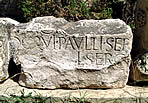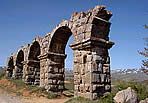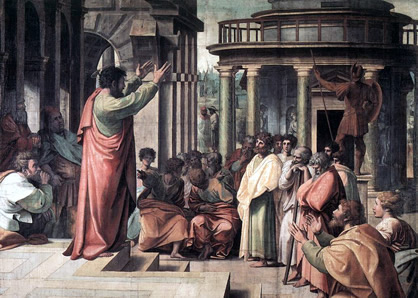Pisidian Antioch (Yalvac) Acts 13:14;14:19-21, I Tim. 3:11
Later in the life of Seleucus Nicator I, the successor of Alexander
the Great that organized Asia Minor, the city of Antioch of Pisidia was founded. He located
the city strategically one hundred miles north of Perga, long after
(25 years) the founding of such cities as Antioch on Orontes and the
nearby port of Seleucia. Part of the so called lake district of
southwest Asia Minor, the strategic value of Pisidian Antioch was
the guard like position it held at 3500 feet above sea level in the
Taurus Mountains.
Asia Minor, the city of Antioch of Pisidia was founded. He located
the city strategically one hundred miles north of Perga, long after
(25 years) the founding of such cities as Antioch on Orontes and the
nearby port of Seleucia. Part of the so called lake district of
southwest Asia Minor, the strategic value of Pisidian Antioch was
the guard like position it held at 3500 feet above sea level in the
Taurus Mountains.
The position guarded the road access from the south, as well as the
so called high road from Ephesus to Syria. It was settled and
maintained as the military command center of south ern
Galatia, and was located in the proximity of the border of Pisidia
and Phrygia. Because it was near the border, the historian Strabo
referred to the place as near Pisidia. The city was set atop a
precipice described by Sir William Ramsey on his visit at the
beginning of the twentieth century as an oblong plateau varying from
50 feet to 200 feet above the plain nearly two miles in
circumference.
ern
Galatia, and was located in the proximity of the border of Pisidia
and Phrygia. Because it was near the border, the historian Strabo
referred to the place as near Pisidia. The city was set atop a
precipice described by Sir William Ramsey on his visit at the
beginning of the twentieth century as an oblong plateau varying from
50 feet to 200 feet above the plain nearly two miles in
circumference.
By 25 BCE the city had become a colony of Rome. Westerners had
poured into the city, retired soldiers with a military pension,
merchants and those seeking a quieter life than those close to Rome.
The expatriate Romans enjoyed full citizenship, something not
attained for their i ndigenous
counterparts until later, yet the whole city flourished and enjoyed
peace and prosperity in the generation leading up to St. Paul and
St. Barnabas visit. The frequent host of Roman governors on travels
from west to east, the city hosted festivals and games, and the
money attracted greater investment in this, a center of Galatian
activity.
ndigenous
counterparts until later, yet the whole city flourished and enjoyed
peace and prosperity in the generation leading up to St. Paul and
St. Barnabas visit. The frequent host of Roman governors on travels
from west to east, the city hosted festivals and games, and the
money attracted greater investment in this, a center of Galatian
activity.
On the First Journey, St. Paul and St. Barnabas left the area of
Perga without John Mark and proceeded to Antioch, where they entered
the synagogue on the Sabbath. The address given there caused the
reaction that later characterized St. Pauls mission journeys, some
had a revival, others a riot! Driven from the city, St. Paul and St.
Barnabas moved on to Iconium , experiencing an early moment of joy
in the journey. It was here that St. Paul was moved by the hardness
of his fellow countrymen and turned to the Gentiles, a decision that
would mark a concern of the Jerusalem Church for years to come.
Church for years to come.
Today, modern Yalvac is settled by a large agricultural and rural
settlement amidst the still rich and fertile plains and
pasturelands.
Biblical Sites in Turkey List


